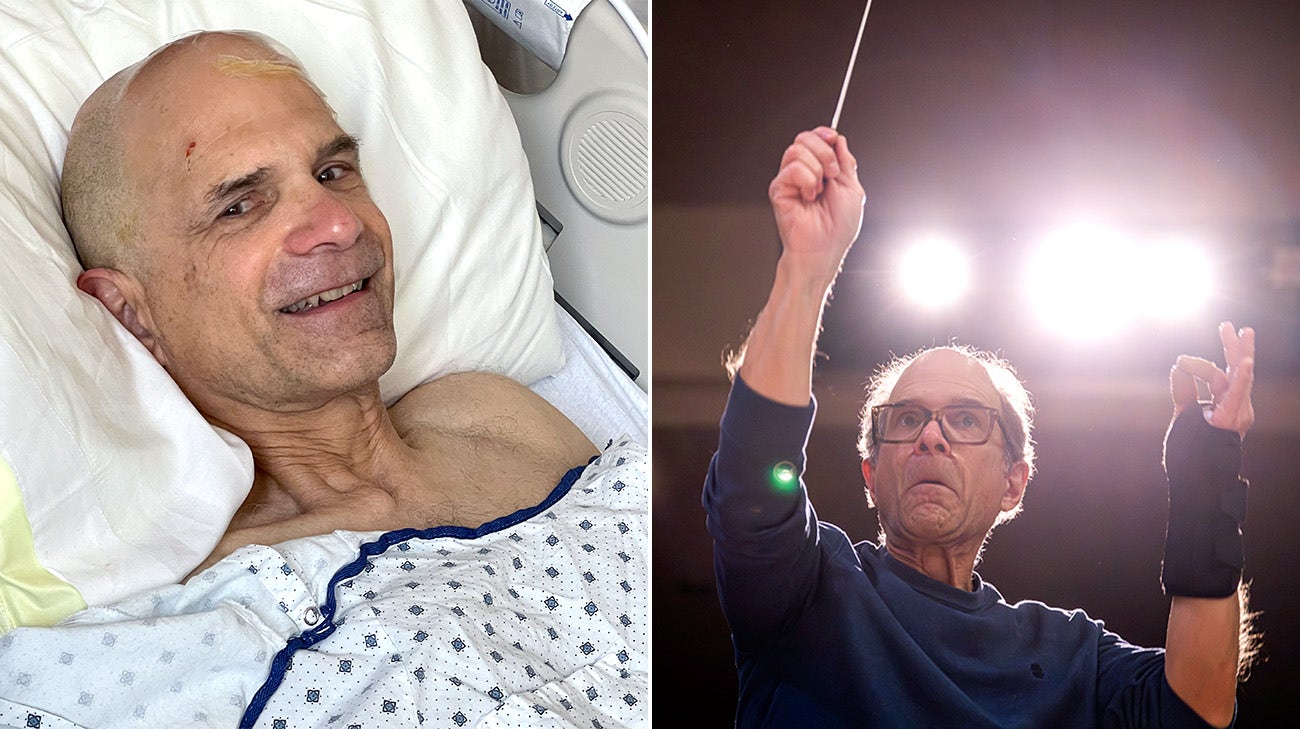Transformative Harmony: How Deep Brain Stimulation is Revolutionizing Life for a Conductor with Parkinson’s
Renowned conductor Michael Reynolds, 58, has regained control of his life and artistry after deep brain stimulation (DBS) dramatically alleviated his Parkinson’s symptoms. The groundbreaking procedure, performed nine months ago at New York’s Mount Sinai Hospital, has enabled Reynolds to return to the podium with renewed precision—offering hope to millions battling neurodegenerative diseases.
The Science Behind the Symphony
Deep brain stimulation involves surgically implanting electrodes that deliver targeted electrical pulses to specific brain regions. For Parkinson’s patients like Reynolds, DBS primarily targets the subthalamic nucleus or globus pallidus—areas responsible for movement regulation. The treatment doesn’t cure Parkinson’s but can significantly reduce tremors, stiffness, and mobility issues when medications become ineffective.
“It’s like someone turned down the volume on my symptoms,” Reynolds describes. “One day I couldn’t hold my baton steady; the next week I was conducting Brahms with the same fluidity as twenty years ago.”
Clinical data supports his experience:
- 70-90% of Parkinson’s patients show significant motor improvement with DBS (Journal of Neurosurgery, 2023)
- Patients experience 4.5 more “on” hours daily when symptoms are controlled (Parkinson’s Foundation)
- Quality-of-life improvements persist for 10+ years in 75% of cases
When Art Meets Neurotechnology
Reynolds’ case highlights DBS’s unique potential for creative professionals. His neurologist, Dr. Elena Rodriguez, explains: “Fine motor control is everything for conductors. Where medications caused unpredictable fluctuations, DBS provides consistent symptom management—critical for rehearsals and performances.”
The conductor’s rehabilitation involved:
- Three months of post-surgical motor retraining
- Customized stimulation level adjustments during rehearsals
- Collaboration between neurologists and music therapists
However, not all outcomes are equally transformative. Neurosurgeon Dr. Raj Patel cautions: “DBS works best for patients who still respond somewhat to Parkinson’s medications. It’s not a silver bullet—we carefully evaluate cognitive function and disease progression first.”
The Broader Impact on Parkinson’s Care
Reynolds’ very public journey has spotlighted DBS advancements:
- Next-generation devices: New implantable pulse generators allow remote adjustments via smartphone
- Expanding eligibility: Recent studies show benefits for earlier intervention (New England Journal of Medicine, 2022)
- Cost barriers: At $50,000-$100,000, access remains limited despite 80% insurance coverage rates
Parkinson’s advocate Miriam Chen notes: “High-profile cases help, but we need policy changes. Many patients can’t take months off work for recovery or travel to specialized centers.”
Conducting the Future of Treatment
Researchers are exploring how DBS might:
- Integrate with AI for real-time symptom adaptation
- Address non-motor symptoms like depression (early trials show 45% improvement)
- Combine with gene therapies for enhanced effects
For now, Reynolds focuses on his art. “This isn’t just about surviving Parkinson’s,” he reflects before conducting Mahler’s Fifth Symphony. “It’s about reclaiming the ability to create beauty on your own terms.”
As science and artistry converge, Reynolds’ story underscores a profound truth: even in the face of neurological adversity, human potential can find its rhythm again. Those inspired to learn more can explore clinical trials at the Michael J. Fox Foundation or attend Reynolds’ benefit concert series for Parkinson’s research this fall.
See more WebMD Network



